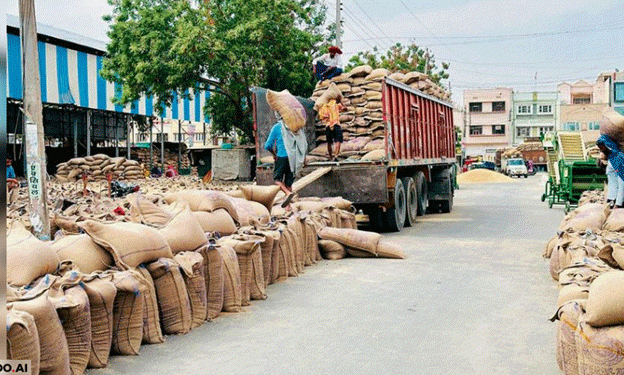The Centre has recently made changes to the wheat seed subsidy scheme for small and marginal farmers in Punjab, aiming to extend benefits to more farmers. Previously, these farmers could access subsidized seeds for up to five acres of land, but under the new scheme, this has been reduced to just one acre per farmer. This modification comes as part of the government’s strategy to expand the reach of the subsidy, which now targets a broader base of farmers—particularly those owning smaller plots, as 68% of farmers in the state are classified as small and marginal, typically owning up to five acres of land.
The new policy is expected to help more farmers access subsidized wheat seeds, increasing the number of beneficiaries in Punjab. However, while the subsidy will cover one acre, the remaining land (up to four acres) will need to be sown with seeds purchased at market prices, which are significantly higher. Wheat seeds are currently available in the open market at Rs 3,000 to Rs 4,500 per quintal, compared to the Rs 1,000 per quintal subsidy farmers previously received.
Implications for Wheat Cultivation Costs and Seed Availability
This year, Punjab is set to sow wheat on around 35 lakh hectares of land, requiring approximately 35 lakh quintals of seeds. The Centre has allocated two lakh quintals of subsidized seeds, the same as last year, while the remaining 33 lakh quintals will need to be purchased from the open market. This creates a financial burden for farmers, as the cost of seeds for larger areas will rise significantly, especially for those with limited financial resources.
The National Food Security Scheme and Rashtriya Krishi Vikas Yojana support the wheat seed subsidy program, with the Centre covering 60% of the subsidy and the state government covering the remaining 40%. The decision to reduce the area covered by subsidized seeds could potentially affect the overall affordability of wheat cultivation for farmers, as many will need to rely on the more expensive market seeds for the majority of their land.
Challenges in Seed Distribution and Sowing Timelines
With wheat sowing already underway, the delay in notifying the subsidy scheme has left many farmers scrambling to purchase seeds at higher prices. As of now, 8.7% of the wheat sowing in Punjab has been completed, with most farmers having already bought seeds from the open market. The state’s Agriculture Minister, Gurmeet Singh Khudian, has been actively engaging with the Union Agriculture Minister to address these concerns, especially regarding the delayed implementation of the subsidy.
According to Jaswant Singh, Director of Agriculture, Punjab, the formal approval for the tweaked scheme has been received, but the seeds are only being made available to farmers starting from the second week of October. Farmers have been advised to keep the bills for seeds purchased so that they can claim the subsidy for the one acre covered under the scheme.
A Double-Edged Sword for Punjab Farmers
While the Centre’s revision of the wheat seed subsidy scheme may increase the number of beneficiaries, it presents a mixed bag of opportunities and challenges. On one hand, more small and marginal farmers will be able to access subsidized seeds for at least one acre, helping to make wheat cultivation more accessible. On the other hand, the increased costs for the remaining acreage could strain farmers’ finances, especially when the seeds in the open market are much more expensive. With sowing already in progress, timely implementation of the subsidy and better communication from the Centre will be crucial to alleviating the financial pressure on farmers and ensuring that Punjab’s wheat production remains strong.
Error




